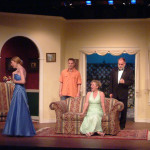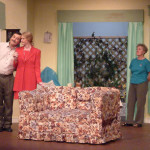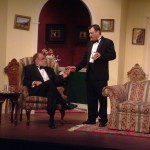My comedy, Renovations, was a play that I had no intention of duplicating in another form. However, when I was assembling stories for my book, A Black Tie Affair and Other Mystery Stories, I needed something short and light-hearted to complete the collection. Renovations had contained a hint of mystery, so I set to the task of transforming the plot into a short story. I had whipped the first draft of the play off in a week so I was sure it would be easy to write the story, which I renamed “Sisters in Crime”.

However, just as I’d struggled with Casting for Murder, every one of my early attempts to transform Renovations ended in failure. Following the narrative structure of the play’s plot-line didn’t work because it was a complicated story which involved eight different characters. I had no desire to write the piece as a novel, and the subject was too light and frothy for a novel anyway. Finally, I chucked everything I’d done so far and took a totally different approach.

I decided to focus on two of the play’s characters, with the other six merely mentioned in conversation. I incorporated my popular series character, Bertram Beary, into the plot, making him the godfather of the play’s heroine, and told the story through a series of meetings in a restaurant. Beary lunched with the two characters in turn, heard their tales of woe and offered fatherly advice. To my amazement, the story came easily to life, and the end result became one reader’s favourite story in the entire book.

Analyzing why this process worked, I conclude that it was because the characters ended up telling the story in their own words. Therefore, even though the story as a whole was narrated in the third person, long segments were told in the first person by the people who were directly affected by the events. This allowed the personalities of the play characters to leap off the page and appear as bubbly, cantankerous, stubborn or devious as they were on stage.

Although this first-person-character narration worked perfectly as a story-telling vehicle, it did affect the order in which events were revealed. What worked as a dramatic and funny climax in the play seemed anticlimactic if left to the end of the story. Instead, a relatively minor revelation from the play made a better conclusion. Lesson learned: Material delivered with great style orally can fall flat if read silently from the page, whereas insignificant asides sometimes can gain from the extra detail provided by the written word.

I was to repeat the play-to-story process with my next script, but because that was a mystery and not a comedy, there were other elements needed to make the transformation work. However, the key with turning Renovations into “Sisters in Crime” was simply the fact that so much of the humour in the play derived from the characters, and therefore, the story version had to be character driven as well.
Next: Repeating the process with variations—how Shadow of Murder became “Mary Poppins, Where are you?”
